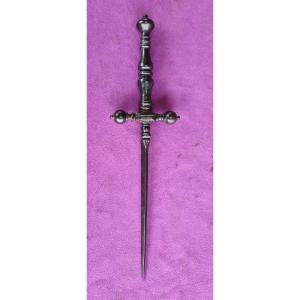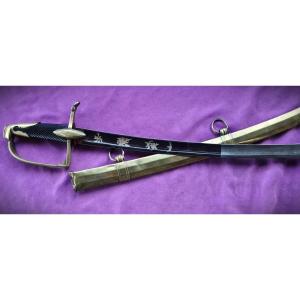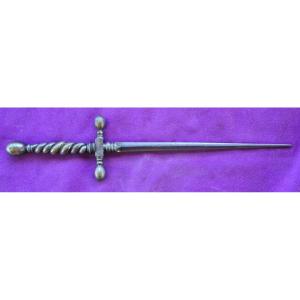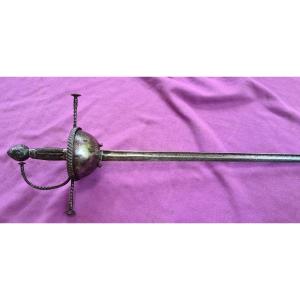The Scottish Dirk, an emblematic weapon of the Highlanders, derives directly from the so-called "ballock dagger " or "kidney dagger", very popular at the end of the Middle Ages. On these early models, the "kidney" shape is still found, together with the beginnings of wood carving in Gaelic knot motifs . These early dirks generally have very rustic blades. the quality of the blade on this one adds further interest.
BLADE : It is single-edged with a thick back and a very pointed triangular shape. A false edge is present in the last 16 centimeters near the point. Along the back, on each face, there is a decorative frieze of semicircles. *
On one face, there is a hallmark in the shape of a crescent moon with a human face, which seems to correspond perfectly to the mark of Jean Matheu Hoffmann, who worked in Germany in the first half of the 17th century. This attribution is entirely plausible, as many blades in Great Britain were imported from the Solingen region, especially long blades.
Blade length = 30.8 cm, width near the handle = 3.1 cm, thickness near the handle = 5.4 mm.
HILT : It is made of very dark wood, probably bog oak. At the base, it features two bulges reminiscent of those found on kidney daggers. The chiseled decoration evokes the interlacing of Gaelic knots. The handle terminates in a widened discoidal section, the upper face of which is also chiseled, with a brass cross in the center to which the blade's tang is riveted.
These antique dirks are rare on the market, often in poor condition, or with very rustic blades.
The fine quality of this one gives it added interest.
Ref B4Y-25/2-18 Free shipping within France. Europe €20, No shipping to USA.
















































 Le Magazine de PROANTIC
Le Magazine de PROANTIC TRÉSORS Magazine
TRÉSORS Magazine Rivista Artiquariato
Rivista Artiquariato